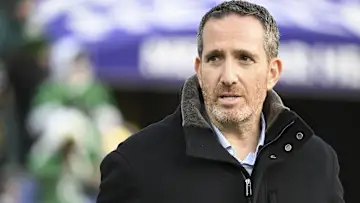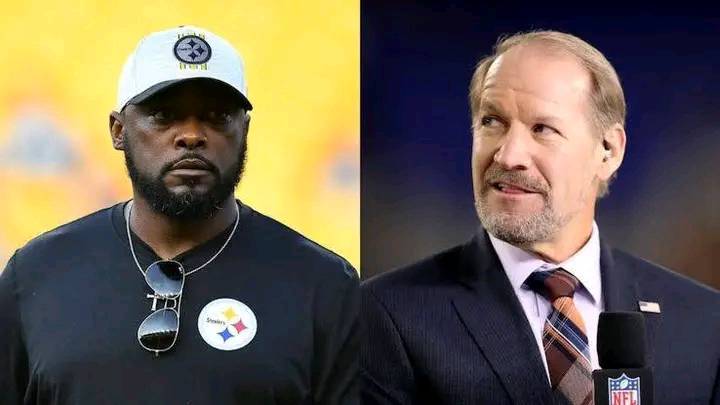The Edmonton Oilers have faced their share of scrutiny following another deep but ultimately disappointing playoff run, but as the offseason begins to take shape, clarity is emerging regarding their goaltending future—specifically, the role of Stuart Skinner. Amid the speculation, frustration, and media debates, the Oilers’ front office has now pulled the curtain back on their plan: Stuart Skinner isn’t going anywhere. In fact, he’s central to their strategy moving forward.
Skinner, the 25-year-old Edmonton native, has become the face of a goaltending unit that has seen its ups and downs over the past few seasons. Despite moments of inconsistency, Skinner has shown growth, resilience, and a level of mental toughness that’s rare in young goalies placed under the bright playoff spotlight. The Oilers are not just sticking with him—they’re building with him.
General Manager Ken Holland, along with head coach Kris Knoblauch, have both voiced support for Skinner in the past few days, emphasizing that the team sees him as a long-term solution rather than a short-term experiment. It’s a statement that matters—not only because it shows the organization is choosing stability, but because it reflects the lessons learned from this season’s journey.
When the Oilers battled through the regular season’s turbulence and surged during the latter months, it was Skinner who was in net for the majority of their wins. And although the playoffs exposed some of his vulnerabilities—most notably in the Stanley Cup Final against the Florida Panthers—he also proved that he’s more than capable of handling pressure.
Let’s rewind a bit. After being named an NHL All-Star during the 2022-23 season and posting solid numbers throughout the regular season, Skinner’s playoff performance drew criticism. His save percentage dipped, and he was pulled multiple times during last year’s postseason. Many wondered if Edmonton would seek a veteran replacement or try to find a “1A” type of goalie to partner with him, similar to how teams like the Vegas Golden Knights rotate between solid netminders.
Instead, the Oilers doubled down on Skinner heading into the 2024-25 campaign, believing that experience, not panic, was the correct response. That decision paid off—at least in part. Skinner delivered 36 wins, a .910 save percentage, and moments of brilliance that kept Edmonton afloat during challenging stretches. Yet, his playoff inconsistencies once again surfaced, particularly in the Final. The questions returned. Is he the guy?
The Oilers’ answer is yes, and they’re not hedging.
The revealed plan, according to sources close to the front office and confirmed by Holland in a recent press availability, is to give Skinner the full confidence of being the team’s uncontested No. 1 goaltender entering training camp. They will not aggressively pursue a starting-caliber goalie in free agency. Instead, they’re likely to target a reliable backup or veteran mentor who understands the clear pecking order: this is Stuart Skinner’s net.
Why the firm belief? The Oilers point to Skinner’s age, development trajectory, and his mental toughness as key indicators that his best hockey is still ahead of him. In addition, the team believes a more structured, defensively responsible blue line will lighten the burden on their goaltending. With Evan Bouchard emerging as a two-way force and Mattias Ekholm stabilizing the back end, the Oilers hope the defense can minimize the high-danger chances that plagued them in spurts.
That strategy is also financial. With Connor McDavid and Leon Draisaitl commanding elite-level contracts (and Draisaitl potentially due for a massive extension soon), the Oilers need affordable stability in net. Skinner, under a team-friendly deal that pays him $2.6 million annually through 2026, provides just that. Going after a top free agent goaltender like Juuse Saros or Jacob Markström via trade or big-money signing would upset that balance and likely cost the team in other critical areas, including forward depth.
It’s a pragmatic approach rooted in belief, not desperation.
There’s also the intangibles. Skinner is a local product, drafted by the team in the third round back in 2017, and has developed entirely within the organization. His presence in the locker room, maturity, and connection with the fanbase add value beyond numbers. Teammates respect him. Coaches trust him. Fans, while sometimes frustrated, have also seen glimpses of what could be a decade-long solution in net if he continues to evolve.
Still, this isn’t blind loyalty. The Oilers are expected to be active in seeking a veteran goaltender who can handle a workload of 20-25 games and be playoff-ready in case of injury or regression. Names like James Reimer, Casey DeSmith, or even a reunion with Calvin Pickard have surfaced. The idea isn’t to replace Skinner but to surround him with the right support.
That includes internal development. Olivier Rodrigue, another promising goaltending prospect, is expected to compete for a more permanent NHL role, possibly as a third goaltender or rotational backup. Rodrigue’s strong season in the AHL has him firmly on the radar, and the Oilers view this goaltending competition behind Skinner as a healthy dynamic—not a controversy.
What will determine the success of this plan is not merely Skinner’s raw numbers but how he performs in the defining moments. The Stanley Cup is the goal, and anything short will draw the microscope back to the net. Skinner knows it, and by all accounts, he embraces the challenge. His offseason plans include specialized goalie coaching, sports psychology sessions, and refining his lateral movement and rebound control—two areas that critics pointed to during the Final.
Another point worth noting is how Skinner handles the pressure. In a market like Edmonton, where expectations are sky-high, some players wilt. Skinner, on the other hand, remains unflappable in interviews and calm in the crease. That demeanor, Oilers brass believes, is a competitive advantage when the stakes are highest. With McDavid and Draisaitl in their prime, the Oilers need a goaltender who can mirror that urgency without cracking under the spotlight.
The front office’s approach also sends a clear message to the rest of the locker room: the organization believes in internal growth and continuity. Instead of overreacting to one playoff series, they’re betting on development. It’s a culture shift from years past, when panic trades or signings were the norm after every postseason stumble.
In many ways, Skinner’s story mirrors the Oilers’ broader narrative: a homegrown talent who has shown flashes of brilliance, endured growing pains, and now stands on the cusp of something bigger. The commitment to him is not just about goaltending—it’s a statement of identity. This team is moving forward with belief, not doubt.
So as the Oilers enter the 2025-26 season, their mission is clear. They’re not reinventing their identity, nor are they overhauling the core. They’re refining, doubling down on the guys who got them to the brink, and asking more of them. That starts in net, where Stuart Skinner will be given every opportunity to backstop Edmonton to its long-awaited Stanley Cup.
For a city hungry for a parade and a fanbase desperate to see its stars hoist the Cup, the pressure is enormous. But the Oilers’ decision on Skinner shows they believe the right pieces are already in place. They just need one more push—and they believe Skinner is capable of delivering it.
Not everyone will agree with the move. There will be debates on sports radio and across social media. Critics will cite the stats. Supporters will point to growth and chemistry. But the Oilers have made their choice, and they’re standing by it.
Stuart Skinner is their guy. Now, it’s up to him to reward their faith.



